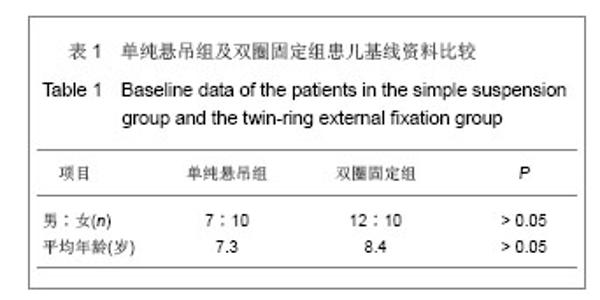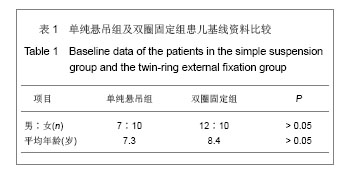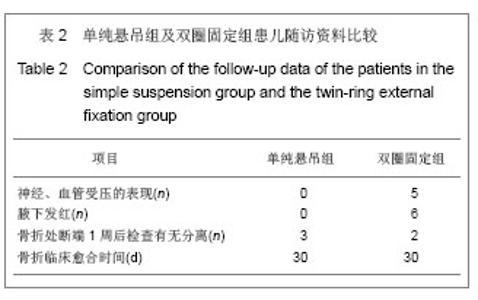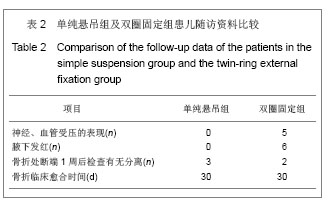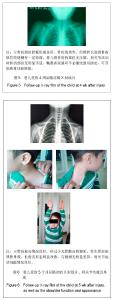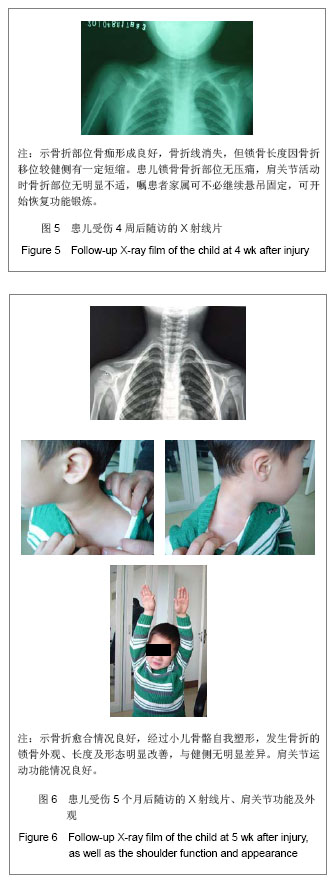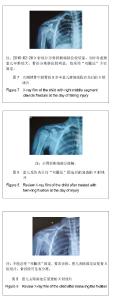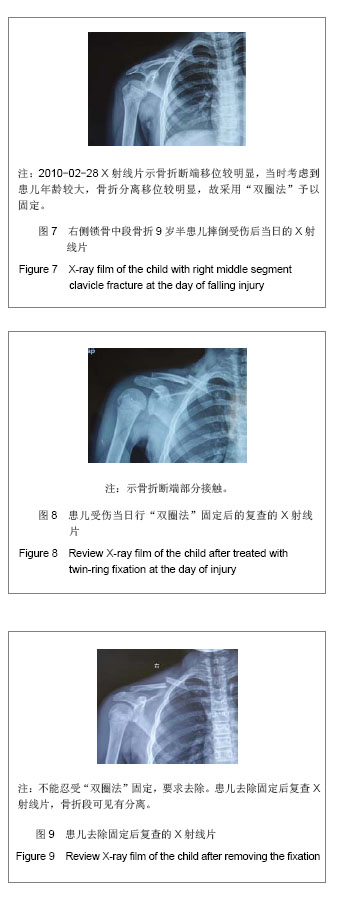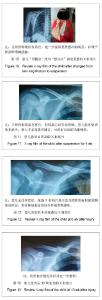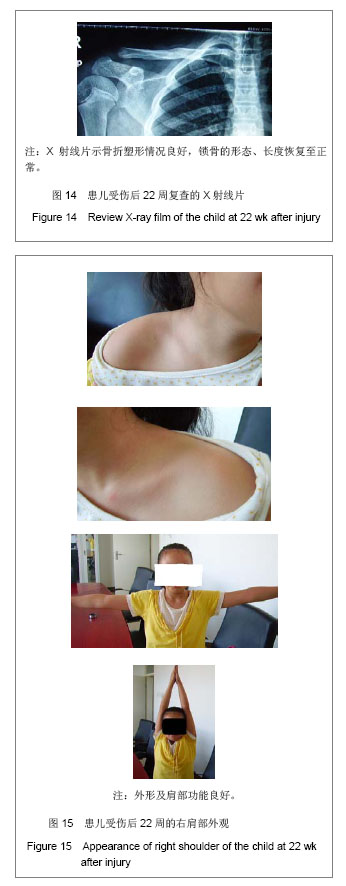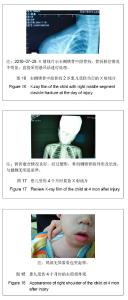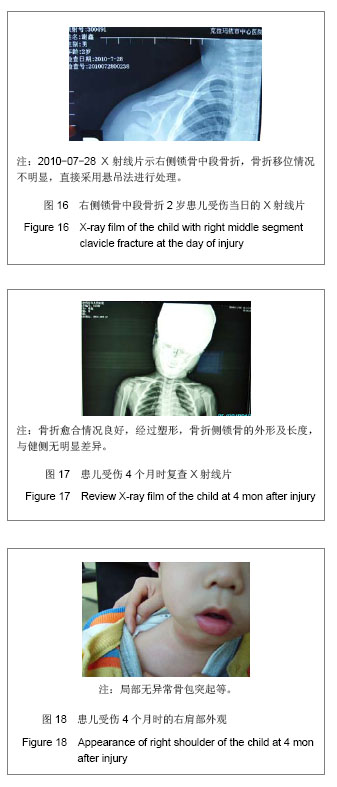Chinese Journal of Tissue Engineering Research ›› 2013, Vol. 17 ›› Issue (39): 6946-6953.doi: 10.3969/j.issn.2095-4344.2013.39.014
Previous Articles Next Articles
Stability of simple suspension and twin-ring external fixation in the treatment of children clavicle fracture
Paerhati•Rexiti1, Yue Yong2, Sheng Wei-bin1, Adeli•Abudurexiti1, Wang Qiang3, Yilixiati•Alifu2, Julaiti•Jilili2
- 1 Department of Orthopedics, the First Hospital of Xinjiang Medical University, Urumqi 830054, Xinjiang Uygur Autonomous Region, China; 2 Karamay People’s Hospital, Karamay 834000, Xinjiang Uygur Autonomous Region, China; 3 Department of Orthopedics, Xinjiang Coal Mine Hospital, Urumqi 830054, Xinjiang Uygur Autonomous Region, China
-
Online:2013-09-24Published:2013-09-24 -
Contact:Sheng Wei-bin, Professor, Chief physician, Doctoral supervisor, Department of Orthopedics, the First Hospital of Xinjiang Medical University, Urumqi 830054, Xinjiang Uygur Autonomous Region, China wbsheng@vip.sina.com -
About author:Paerhati?Rexiti★, Master, Attending physician, Lecturer, Department of Orthopedics, the First Hospital of Xinjiang Medical University, Urumqi 830054, Xinjiang Uygur Autonomous Region, China parharty@aliyun.com
CLC Number:
Cite this article
Paerhati•Rexiti, Yue Yong, Sheng Wei-bin, Adeli•Abudurexiti, Wang Qiang, Yilixiati•Alifu, Julaiti•Jilili . Stability of simple suspension and twin-ring external fixation in the treatment of children clavicle fracture[J]. Chinese Journal of Tissue Engineering Research, 2013, 17(39): 6946-6953.
share this article
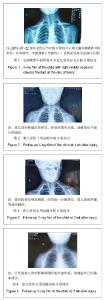
单纯悬吊组17例小儿患者均骨折愈合,未见骨不连发生,无感染发生,无皮肤软组织的压伤,患儿配合良好,小儿的上肢功能正常,无骨折侧上肢的神经血管受压的表现。有3例患儿骨折处断端1周后检查有分离,再次悬吊提高患侧肘关节高度后,1例恢复骨折处的接触,2例仍有分离,改为双圈固定法固定后,断端接触。骨折1个月后,13例患儿局部可触有小的包块;骨折8个月后,局部增生的骨痂逐渐减少,肉眼观察下骨折局部外观未见有包块。 双圈固定组22例小儿患者均骨折愈合,未见骨不连发生,无感染发生,无皮肤软组织的勒伤,患儿配合良好,小儿的上肢功能正常,16例无骨折侧上肢的神经血管受压的表现。有5例患儿固定后,有骨折侧上肢的神经血管受压的表现:麻木、手发青紫,松解后,3例缓解,2例改为单纯悬吊固定后,断端接触;腋下发红6例,加厚垫、局部处理后缓解;早期睡眠困难4例,后期适应;2例骨折处断端1周后检查有分离,再次调整松紧后,2例均恢复骨折断端的接触。骨折1个月后,7例患儿局部可触有小的包块;骨折8个月后,局部增生的骨痂逐渐减少,肉眼观察下骨折局部外观未见有包块。 全部患儿在4周内均达到临床愈合,6周内恢复基本日常生活和学习能力,1年后随访,双侧锁骨进行X射线摄片对比,患侧锁骨无明显畸形。 2.4 典型病例 典型病例1:男性患儿,4岁,2010-02-28主因“高处坠落撞击右肩部致疼痛、活动受限2 h”为主诉来院就诊。门诊拍片示右侧锁骨中段骨折,患儿直接采取悬吊法固定。 2010-12-10 患儿受伤5个月后随访X射线片及患儿的肩关节功能及外观,示骨折愈合情况良好,经过小儿骨骼自我塑形,发生骨折的锁骨外观、长度及形态明显改善,与健侧无明显差异。肩关节运动功能良好,见图1-6。"

| [1]Beaty JH, Kasser JR. Rockwood&Wilkins’ fracture in children[5th] [M].王家让,李康华,胡建中/主译.长沙:湖南科学技术出版社, 2006: 415-422.
[2]叶滨宾.儿科影像诊断与临床(骨关节系统卷)[M].北京:人民军医出版社,2011:138.
[3]陈孝平,石应康,段德生.外科学(供七年制临床医学等专业用)[M].北京:人民卫生出版社,2002:925.
[4]张金哲,周红,王强.小儿创伤外科学[M].杭州:浙江科学技术出版社, 2006: 415.
[5]卢世壁,主译.坎贝尔骨科手术学[M]. 9版,济南:山东科学技术出版社, 2001: 2367-2368.
[6]吉士俊,潘少川,王继孟,等.小儿骨科学[M].济南:山东科学技术出版社, 2000: 506-508.
[7]Dormans JP. Core Knowledge In Pediatric Orthopaedics [M].潘少川,主译.北京:人民卫生出版社,2006: 81.
[8]Cramer KE, Scherl SA. Pediatrics[M].赵黎,钱济先 主译.西安:第四军医大学出版社, 2008: 114.
[9]荣国威,王乘武.骨折[M]. 北京:人民卫生出版社,2004: 1288.
[10]候春林,王诗波,吴韬.锁骨外科学[M].北京:人民军医出版社, 2004: 57.
[11]郑洵,李伟居,蔡俊通.纸板棉垫加压法治疗儿童锁骨骨折60例疗效观察[J].新中医,2007,8(39):33-34.
[12]Smekal V,lrenberger A, Struve P,et al. Elastic stable intramedullary nailing versus nonoperative treatment of displaced midshaft clavicular fractures—a randomized, controlled,clinical trial.J Orthop Trauma. 2009;23(2):106-112.
[13]何锦勇,叶勇光,利云峰. 8字绷带包扎固定法联合锁骨固定带治疗青少年锁骨骨折临床观察[J].中国中医骨伤科杂志,2011, 8(19): 63-64.
[14]曾炳芳,刘旭东.锁骨骨折治疗现状分析[J].中华外科杂志, 2007, 45(20):1372-1374.
[15]李云龙,成欣.闭合弹性钉治疗青少年锁骨中段骨折[J].实用临床医药杂志,2011,15(19): 161-162.
[16]Jensen PO, Andersen K, Lauritzen J. Treatment of midclavicular fractures. A prospective randomized trial comparing treatment with a figure-of-eight dressing and a simple arm sling. Ugeskr Laeger. 1985;147:1986-1988.
[17]Andersen K, Jensen PO, Lauritzen J. Treatment of clavicular fractures. Figure-of-eight bandage versus a simple sling. Acta Orthop Scand. 1987;58:71-74.
[18]Stanley D, Norris SH. Recovery following fractures of the clavicle treated conservatively. Injury. 1988;19:162-164. |
| [1] | Chen Ziyang, Pu Rui, Deng Shuang, Yuan Lingyan. Regulatory effect of exosomes on exercise-mediated insulin resistance diseases [J]. Chinese Journal of Tissue Engineering Research, 2021, 25(25): 4089-4094. |
| [2] | Chen Yang, Huang Denggao, Gao Yuanhui, Wang Shunlan, Cao Hui, Zheng Linlin, He Haowei, Luo Siqin, Xiao Jingchuan, Zhang Yingai, Zhang Shufang. Low-intensity pulsed ultrasound promotes the proliferation and adhesion of human adipose-derived mesenchymal stem cells [J]. Chinese Journal of Tissue Engineering Research, 2021, 25(25): 3949-3955. |
| [3] | Yang Junhui, Luo Jinli, Yuan Xiaoping. Effects of human growth hormone on proliferation and osteogenic differentiation of human periodontal ligament stem cells [J]. Chinese Journal of Tissue Engineering Research, 2021, 25(25): 3956-3961. |
| [4] | Sun Jianwei, Yang Xinming, Zhang Ying. Effect of montelukast combined with bone marrow mesenchymal stem cell transplantation on spinal cord injury in rat models [J]. Chinese Journal of Tissue Engineering Research, 2021, 25(25): 3962-3969. |
| [5] | Gao Shan, Huang Dongjing, Hong Haiman, Jia Jingqiao, Meng Fei. Comparison on the curative effect of human placenta-derived mesenchymal stem cells and induced islet-like cells in gestational diabetes mellitus rats [J]. Chinese Journal of Tissue Engineering Research, 2021, 25(25): 3981-3987. |
| [6] | Hao Xiaona, Zhang Yingjie, Li Yuyun, Xu Tao. Bone marrow mesenchymal stem cells overexpressing prolyl oligopeptidase on the repair of liver fibrosis in rat models [J]. Chinese Journal of Tissue Engineering Research, 2021, 25(25): 3988-3993. |
| [7] | Liu Jianyou, Jia Zhongwei, Niu Jiawei, Cao Xinjie, Zhang Dong, Wei Jie. A new method for measuring the anteversion angle of the femoral neck by constructing the three-dimensional digital model of the femur [J]. Chinese Journal of Tissue Engineering Research, 2021, 25(24): 3779-3783. |
| [8] | Meng Lingjie, Qian Hui, Sheng Xiaolei, Lu Jianfeng, Huang Jianping, Qi Liangang, Liu Zongbao. Application of three-dimensional printing technology combined with bone cement in minimally invasive treatment of the collapsed Sanders III type of calcaneal fractures [J]. Chinese Journal of Tissue Engineering Research, 2021, 25(24): 3784-3789. |
| [9] | Qian Xuankun, Huang Hefei, Wu Chengcong, Liu Keting, Ou Hua, Zhang Jinpeng, Ren Jing, Wan Jianshan. Computer-assisted navigation combined with minimally invasive transforaminal lumbar interbody fusion for lumbar spondylolisthesis [J]. Chinese Journal of Tissue Engineering Research, 2021, 25(24): 3790-3795. |
| [10] | Hu Jing, Xiang Yang, Ye Chuan, Han Ziji. Three-dimensional printing assisted screw placement and freehand pedicle screw fixation in the treatment of thoracolumbar fractures: 1-year follow-up [J]. Chinese Journal of Tissue Engineering Research, 2021, 25(24): 3804-3809. |
| [11] | Shu Qihang, Liao Yijia, Xue Jingbo, Yan Yiguo, Wang Cheng. Three-dimensional finite element analysis of a new three-dimensional printed porous fusion cage for cervical vertebra [J]. Chinese Journal of Tissue Engineering Research, 2021, 25(24): 3810-3815. |
| [12] | Wang Yihan, Li Yang, Zhang Ling, Zhang Rui, Xu Ruida, Han Xiaofeng, Cheng Guangqi, Wang Weil. Application of three-dimensional visualization technology for digital orthopedics in the reduction and fixation of intertrochanteric fracture [J]. Chinese Journal of Tissue Engineering Research, 2021, 25(24): 3816-3820. |
| [13] | Sun Maji, Wang Qiuan, Zhang Xingchen, Guo Chong, Yuan Feng, Guo Kaijin. Development and biomechanical analysis of a new anterior cervical pedicle screw fixation system [J]. Chinese Journal of Tissue Engineering Research, 2021, 25(24): 3821-3825. |
| [14] | Lin Wang, Wang Yingying, Guo Weizhong, Yuan Cuihua, Xu Shenggui, Zhang Shenshen, Lin Chengshou. Adopting expanded lateral approach to enhance the mechanical stability and knee function for treating posterolateral column fracture of tibial plateau [J]. Chinese Journal of Tissue Engineering Research, 2021, 25(24): 3826-3827. |
| [15] | Zhu Yun, Chen Yu, Qiu Hao, Liu Dun, Jin Guorong, Chen Shimou, Weng Zheng. Finite element analysis for treatment of osteoporotic femoral fracture with far cortical locking screw [J]. Chinese Journal of Tissue Engineering Research, 2021, 25(24): 3832-3837. |
| Viewed | ||||||
|
Full text |
|
|||||
|
Abstract |
|
|||||
